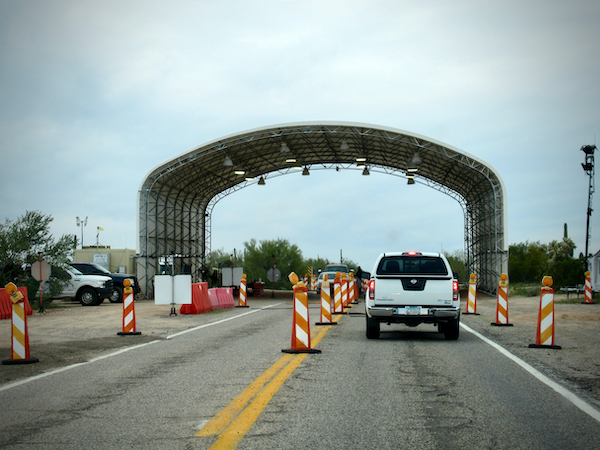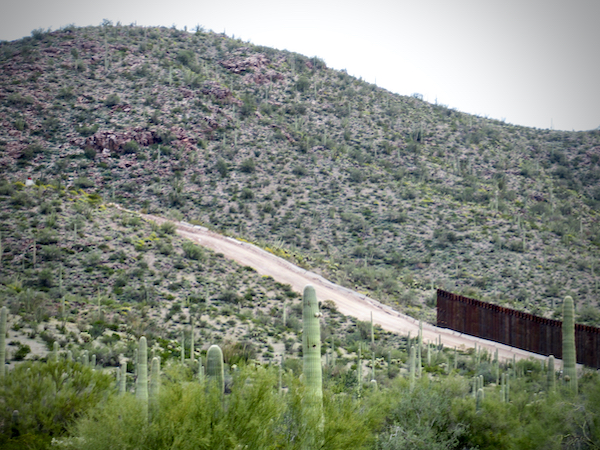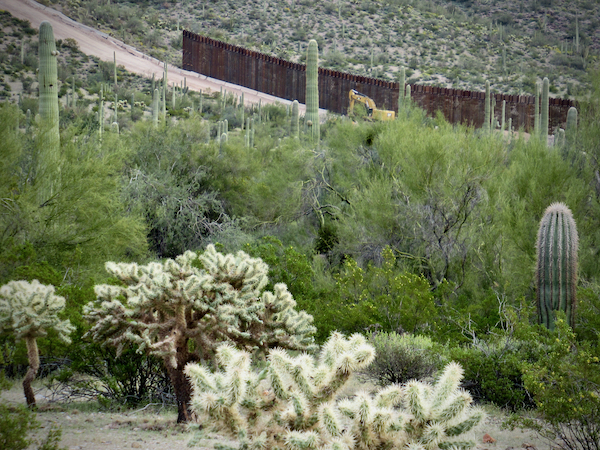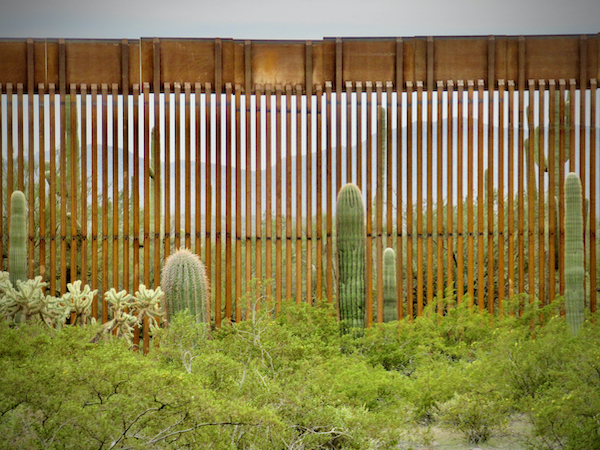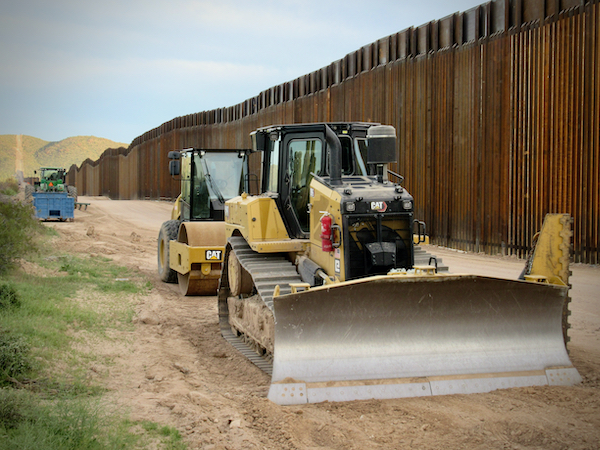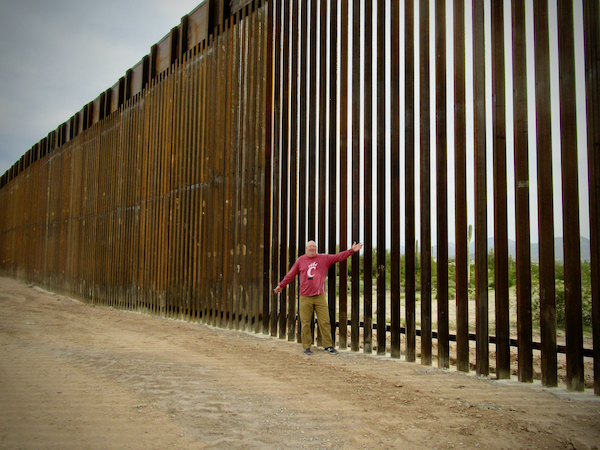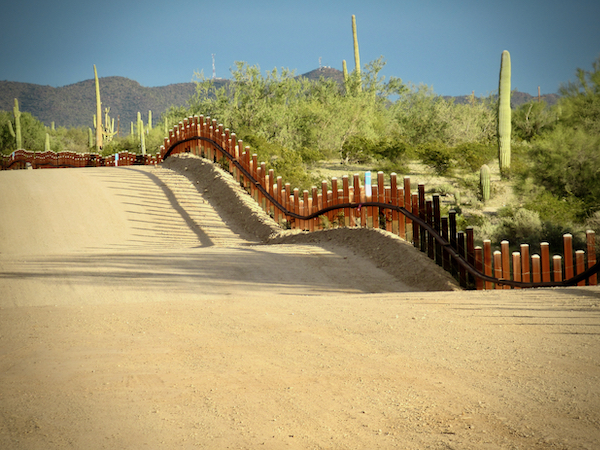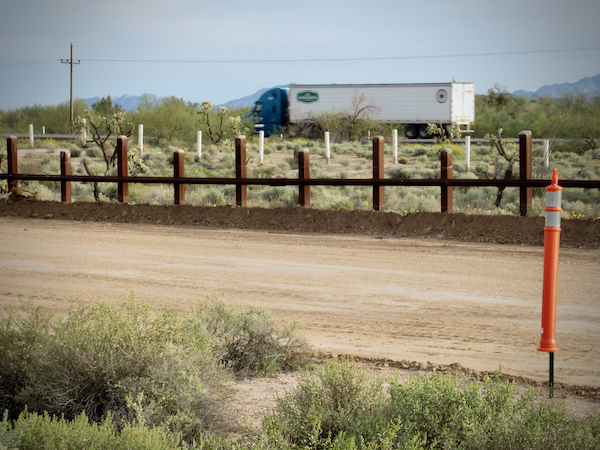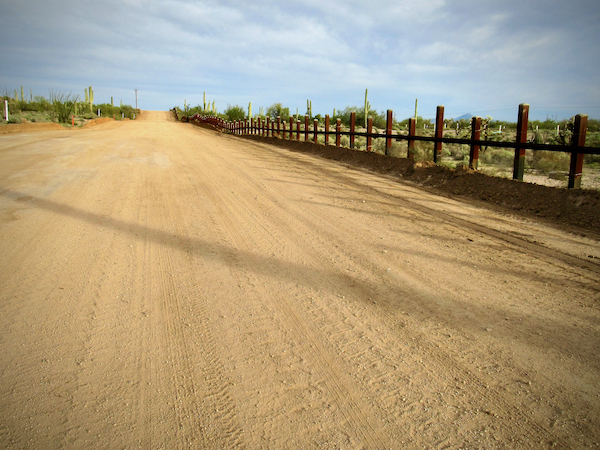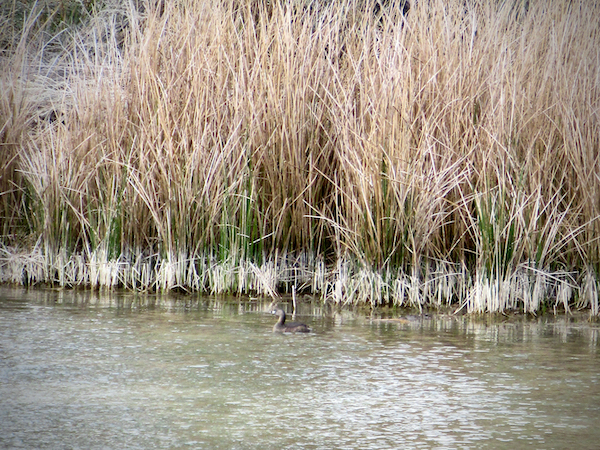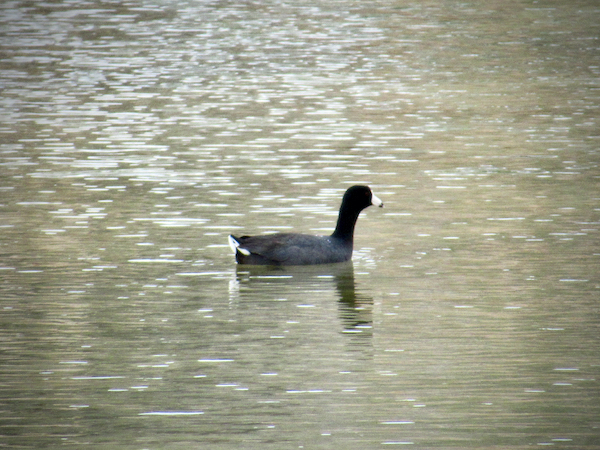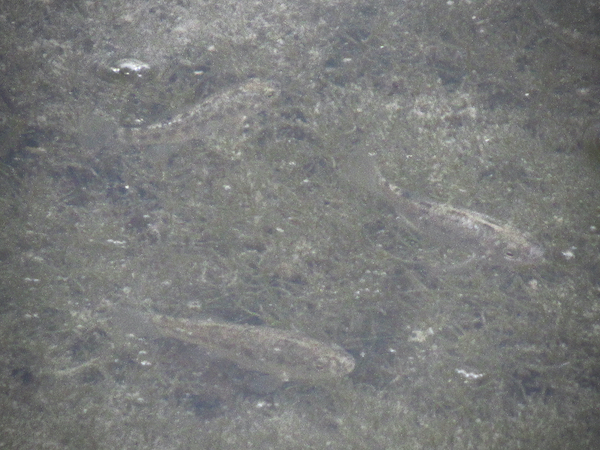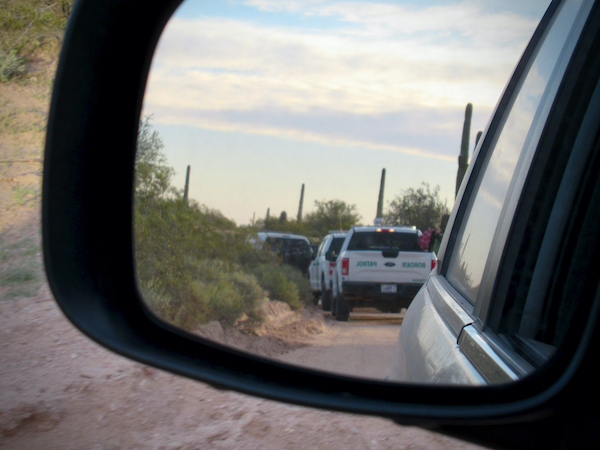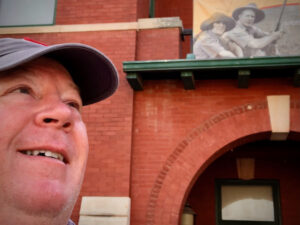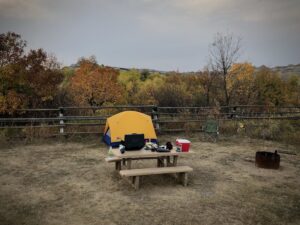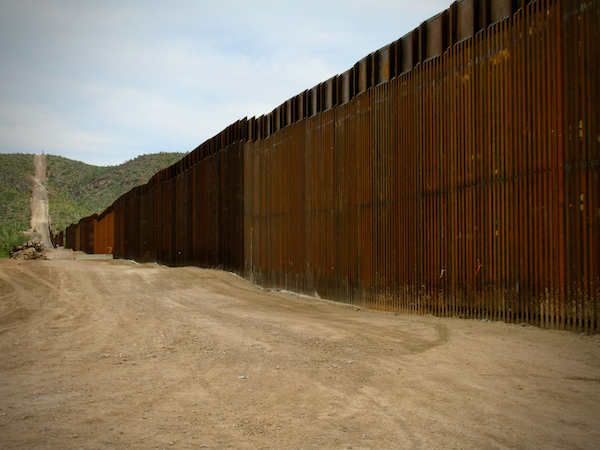
I am in search of the mysterious and elusive Sonoyta desert pupfish, an endangered species that lives in Quitobaquito Springs at the southernmost tip of Organ Pipe cactus National Monument. Never heard of the pupfish? Neither had I, until my much more attune sibling introduced me to the similarly threatened Devils Hole pupfish of Death Valley National Park in California.
The Arizona-based pupfish, which is a distinct species, lives only in Quitobaquito. It’s a tough little critter, able to withstand a wide range of temperatures (from 40F to 108F) and up to three times the salinity levels found in the ocean.
To get to Quitobaquito, I need to drive southeast from Ajo through Why (population 162) and then south on State Route 85, the road to Puerto Peñasco (aka Rocky Point), Mexico. Why was originally named Y, for the main intersection there, but Arizona law requires a minimum of three letters in town names, so Why it is.
Just before the border on the right is Puerto Blanco Drive, a wide gravel road that winds 15 miles through the desert to the spring. The minivan is not the best off-road vehicle, but one of the park rangers said the road was well-maintained.
Soon I would see why. The south branch of Puerto Blanco parallels the U.S.-Mexico border. Heavy equipment travels up and down this stretch of road, back and forth, day after day, flattening the rough earth. Why?
Unbeknownst to me, I’m in the construction epicenter for the new parts of the much-discussed barrier between the United States and Mexico. The concrete and steel structure is (in parts) 30 feet tall, but also extends six feet below the earth’s surface.
This is what caught my attention a few days earlier in Tucson as I watched the local TV news. Builders were using dynamite to pummel through the bedrock at the base. So members of the Tohono O’odham tribe led a protest, saying the blasts disturbed their ancient burial sites.
For what it’s worth, I think the construction crew leader’s TV response was they were using the dynamite “very gently,” or something like that.
As my Dodge Caravan raises a cloud of dust, I round a corner and there it is. Surreal, like one of those enormous outdoor Christo art installations. A miles-long curtain of steel across a barren land.
It’s Sunday, which turns out to be the perfect day to check out the wall, close-up and personal. On any other day, there’s way too much construction activity – not to mention the constant policing by the U.S. Border Patrol.
After Organ Pipe Cactus National Monument Park Ranger Kris Eggle was gunned down by members of a Mexican drug cartel in 2002, area border patrol ranks swelled from 15 to 500. They also built a huge new base just outside Why, on the way to Ajo.
The national monument land includes about 30 miles of U.S.-Mexico border. It’s a hotbed for smugglers of both humans and illicit drugs. More than 7,000 bodies have been found in this area in the last 20 years. And the last thing agents want are swarms of tourists taking selfies at The Wall.
But, like I said, it’s Sunday. There’s no one here but me and some idle heavy equipment. Check that – now it’s me and two 20-somethings from Japan. We talk. And take some photos. Lots and lots of photos.
The duo plan to drive the length of the wall from San Diego to El Paso, taking photographs and talking to locals for a documentary they hope to enter in some Tokyo summer film festival.
I ask, “Do the Japanese people know anything about this wall? Have they ever even heard of it?”
The answer is “No,” thankfully. It wasn’t always this way, I tried to explain, but they were too young to remember U.S. President Ronald Reagan‘s famed 1987 ” … tear down this wall!” speech in a then very-much-divided Berlin.
Not as memorable but maybe a little bit more relevant to this blog was former Arizona Governor Janet Napolitano in 2007 when she said, “You show me a 50-foot wall, and I’ll show you a 51-foot ladder.” The joke has since been reframed to, “Show me a 30-foot wall and I’ll show you a Mexican on the other side selling a 32-foot ladder.” I think former President of Mexico Enrique Peña Nieto may have used that one.
I mean, this border is 1,954 miles long, and there’s about 1,300 miles of wall to go. Would it not be more prudent to spend whatever is left of our U.S. taxpayer dollars to repair crumbling bridges and roads? But I digress … this is supposed to be a humorous travel blog! 🙂
Anyway, as I leave the construction area and continue to Quitobaquito Springs, the steel behemoth quickly returns to it’s much more humble (and, if you believe this, equally scalable) beginnings as a simple wooden fence.
Meanwhile, just yards away on the other side is the 834-mile, western end of Mexican Federal Highway 2, which runs (not contiguously) from the Gulf of Mexico to Tijuana. It appears that the Mexicans are way more prepared to deliver things to the border than we are to stop things from crossing it. Just sayin’.
I finally reach my destination. It’s a beautiful little oasis (if you can block out the noise from the passing trucks) – more like a pond, really, but fed by a lovely desert spring.
I walk the entire circumference, stepping as close to the edge as I can. And there they are: Sonoyta pupfish. Or at least that’s what I think they are. I really have no idea. What’s a pupfish look like, anyway? Does it have a little baby dog face? I see fish, so they must be the pupfish, right?
But wait, there’s a bonus! There are Sonoyta mud turtles too, which I later learn also are endangered. Both species are only found right here – just one place in the entire world.
It’s now 5 pm, and next to a highway in the Sonoran desert at the U.S. border is the last place I want to be at night. So in to the minivan and off I go.
On the way back to the main road, I pass a cluster of at least five green and white U.S. Border Patrol trucks, SUVs and a van near a section of the wall still under construction.
They have detained what looks to be a pretty typical Mexican family – a man, woman and three small children – sitting on the side of the dirt road.
I wave as I slowly drive by. I guess the agents do work Sundays after all.

